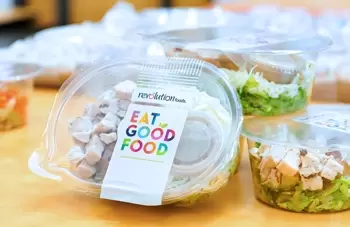 When Nora Silver first asked me to teach the Haas undergrad course on Social Entrepreneurship, I have to admit that I was only thinking about it in terms of nonprofit organizations. I must have inadvertently revealed this bias in a comment, because I distinctly remember Nora correcting me. “No, no,” she said. “This course is intended to cover social enterprise more broadly.” This aspect of the sector is of deep interest to my students and possibly more top of mind for many of them than the nonprofit approach. I have wondered if that was because it gets more media coverage and is more likely to be in their realm of direct experience, or if it’s because it is more appealing to them as a potential career path. In any case, teaching this course has compelled me to learn more about social enterprise more broadly, and by extension, to think more critically about how market forces impact the entire domain. Kirsten Tobey, co-founder and Chief Impact Officer at Revolution Foods, joined the class this past week to talk about social enterprises, B Corps, Public Benefit Corporations and Rev Foods most specifically. Having Kirsten speak to a class at Haas is always profoundly inspiring because she and her co-founder literally launched their business from the buildings where we meet as part of a class taught by Will Rosenzweig on Social Enterprise. Her description of raising seed money, their early partnership with Whole Foods, and their transition from being a C Corp to a B Corp to a PBC makes the whole experience seem both imaginable and real, while being detailed and business-nerdy in a pitch perfect way. The Rev Foods story is also an excellent case study for an exploration of social enterprise because of the very real challenges they have encountered in wrestling with the tension of balancing impact and profit. While wildly successful by most measures (and admittedly, the measures that I find most compelling), the company has yet to achieve profitability. From experimenting with everything from food trucks to vending machines to Consumer Packaged Goods (CPGs for those in business school world) to acquisition, Rev Foods has been both bold and creative in their efforts to identify models that work best for their customers. Kirsten’s story also paints an interesting counterpoint to the narrative that our other speakers have shared, with the for-profit structure creating access to capital markets simply not available in the nonprofit realm. This was a determining factor when Kirsten and her co-founder, Kristin Richmond, elected to launch as a C Corp. A food business is inherently capital intensive and not something, as Kirsten points out, that one can easily bootstrap. But venture financing comes with costs, from giving up ownership to creating financial runways that can distract entrepreneurs from the importance of building business models based on sustainable financials. The students asked some great questions about the larger context of the business, and I was interested to hear Kirsten speak to the history of school lunch in America – from its origins as an effort to address post World War II concerns about food insecurity and the ability to recruit soldiers (weirdly mirrored by more recent military concerns about recruitment efforts being impacted by growing obesity rates) and its development as an element of the federal agricultural subsidies program. Delightfully, one of the students noted that he had been the beneficiary of Rev Foods as a student and that it had contributed to his interest and appreciation of healthy foods. After Kirsten’s remarks, we had a pop quiz of sorts – not graded, but I wanted to have the students respond to some questions that I felt reflected some of the key takeaways I wanted them to have so far in the course. I have pasted the six questions from this Midterm Assessment below. Afterwards I asked the students if they were surprised by the questions or if there were any questions that they thought I should have included. One student suggested asking if they had any outstanding questions or things they were curious about, and I plan to add that question in future years. For this week we will be joined by David Bornstein to talk about the importance of narrative and narrative shifts and the students are watching a movie of their choosing about a social entrepreneur/innovator. I suggested four: Dark Waters (2019) The Boy Who Harnessed the Wind (2019) Just Mercy (2019) On the Basis of Sex (2018) We’re also reading “The Secret to Better Storytelling for Social Change: Better Partnerships”: https://ssir.org/articles/entry/the_secret_to_better_storytelling_for_social_change_better_partnerships# Midterm Understanding Assessment 1.What is social entrepreneurship and how does it differ from/relate to nonprofit organizations more broadly and social enterprises specifically? 2.What did Marshall Ganz mean when he said that social enterprise was not social change? 3.Explain the idea that our systems – education, healthcare, voting - are not broken, they are operating exactly as designed. Do you agree/disagree? Explain your position. 4.When speaking to our class, Willy Foote referenced Bryan Stevenson’s four steps to change the world: get proximate, change the narrative, stay hopeful and put yourself in uncomfortable places. What do you think that means? Can you offer examples? 5.Who owns a nonprofit? 6.If you had been on the Central Asia Institute’s Board of Directors, do you believe you would have done something different from what they did? If yes, what would you have done?
1 Comment
Arpina Nakashian
10/24/2022 08:10:01 pm
Very interesting! Thank you.
Reply
Leave a Reply. |
Jill's BlogPeople need meaning, the opportunity for mastery, and community to thrive. Creating opportunities for people to contribute, and to find their best selves is some of the most important work we can do. |